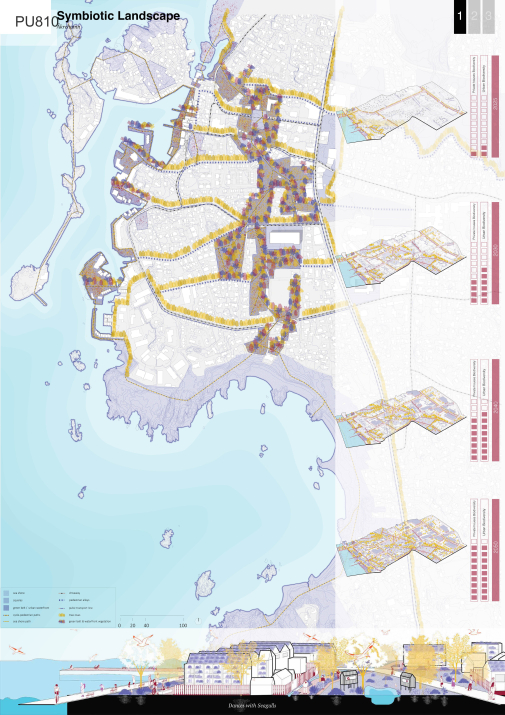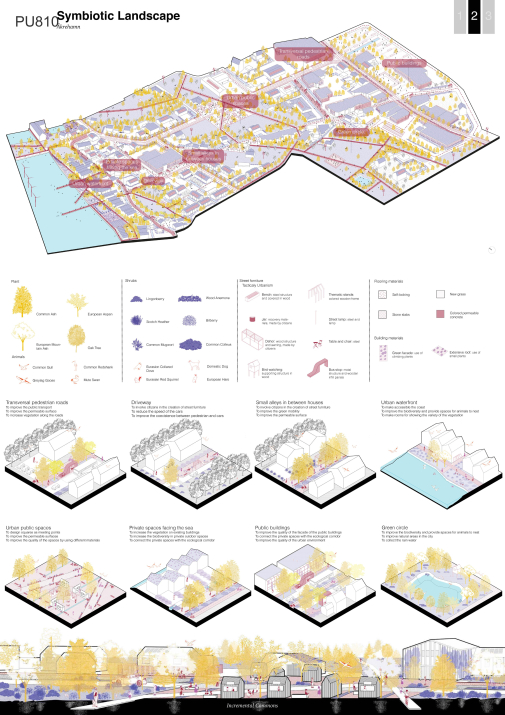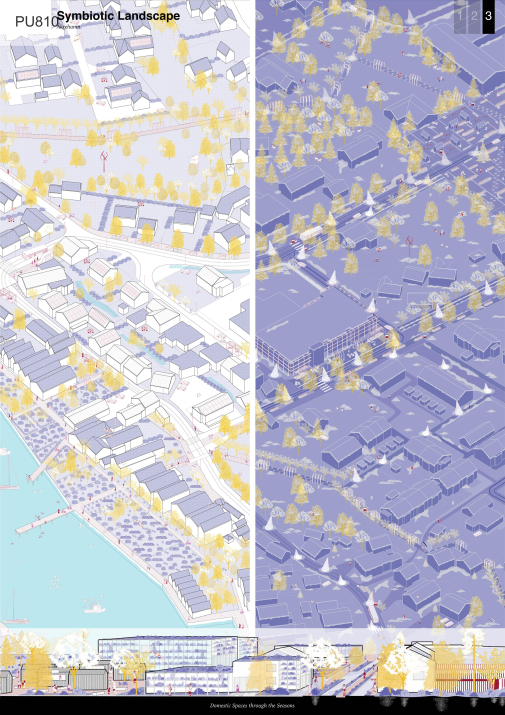Project:
Symbiotic Landscape

About
-
How to stress the idea of biodiversity and co-living of people and nature?
How to implement step by step the system of public spaces for the local community?
How to work on the quality of streets replacing cars with trees and soft mobility to make them more livable?
The project Commonizing the daily Landscape focuses on a series of elements of the city that ask to be reconnected, as part of a complex system of commons for the inhabitants, intended as both human and non-human: the waterfront facing the sea; the public spaces belt were the main welfare spaces are located; the inner transversal road in between houses; the Fv 547 main axis as a perimeter edge.
"We decided to approach the landscape and urban issues not only from the physical/material point of view - something that could partially come later, in the next steps - but also considering the project as a strategy for the city, a phased process that can direct the future transformation of the urban spaces in an ecological dimension, supporting the variety of vegetal and animal species that can co-live there."
-
Symbiotic Landscape focuses on a series of elements that need to be connected and proposes a phased project through various steps to transform the landscape. Highlighting the significance of a north-south urban waterfront and a corresponding green belt in the city center, the project links these features through a network of west-east transversal streets. A masterplan is composed using plants, shrubs and street furniture as tools for tactical urbanism that adds a consistent scale to the street network.
The jury thinks Symbiotic Landscape is an interesting proposal that uses green structures as tools for transforming and revitalizing the urban fabric of Åkra. The jury is impressed with the solid concept and boldness of this project. It is a fully sustainable project, presented in stunningly beautiful graphics. It triggers the viewer's visions and imagination of what Åkrehamn could become.
-
Some of the team members are still students, some others are architects and post-docs.
Considering the Europan competition, the three founders also got a special mention in Pitea (SE) in the current edition with the project entitled “Lagom”.
Moreover, one of the founders - Silvia Lanteri - was also part of the “Making Room(s)” team that was selected as runner-up in Cuneo (IT) by Europan 14.Associates:
Filippo Fiandanese
Silvia Lanteri
Maicol Negrello
Alessia Carena
Federico Demichelis
Marthe Van Endert
Sara BareraContributor:
Cara Geldenhuys
-
-
1. How do you define the main issue of your project in relation with the theme “Living Cities Imagining architecture taking care of the milieus”? And in which way do you think your project can contribute to an ecological and/or social evolution?
We decided to approach the landscape and urban issues not only from the physical/material point of view - something that could partially come later, in the next steps - but also considering the project as a strategy for the city, a phased process that can direct the future transformation of the urban spaces in an ecological dimension, supporting the variety of vegetal and animal species that can co-live there.2. How did the issues of your design and the questions raised by the site mutation meet?
The project “Symbiotic Landscape” focuses on a series of elements in Åkrehamn that ask to be reconnected, as part of a complex system of commons for the inhabitants (intended as both human and non-human): the waterfront facing the sea; the public spaces belt were the main welfare spaces are located; the inner transversal road in between houses; the Fv 547 main axis as a perimeter edge.3. Have you treated these issues previously? What were the reference projects that inspired yours?
We are interested in the issues of urban regeneration in fragile areas, with a focus on nature-based solutions, with attention to the coexistence of different inhabitants. Our references were various designers who in the last decades approached these themes, such as Effekt Architects, SLA, and White Arkitekter.4. How can your project be implemented together with the actors through a negotiated process and in time. How did you consider this issue in your project?
Our project identified various steps for the transformation of this territory, opening the scale of intervention to a wider portion of the city along the coast. We think that some actions could be put as a priority, while others could follow by being tested and implemented together with the local community. In general, we consider the public space as something that needs to be designed and transformed by the administration with a clear plan, a base where a series of single actions and architectures could be driven by inhabitants and private stakeholders to implement the idea of commons also with “bottom-up” initiatives.5. How did you form the team for the competition and if so what are the skills you associated?
The three founders of the team have been colleagues and friends since university, while the others met through the years in various design ateliers and research activities where they shared common interests in urban regeneration with a focus on landscape and nature-based solutions.6. How could this prize help you in your professional career?
Europan is a huge opportunity that helps young architects to test ideas and to create networks. For some of us, it will help in introducing ourselves to architectural bureaus, while for others it will push academic research in the direction of the ecological issues addressed by the competition.
Related projects
-
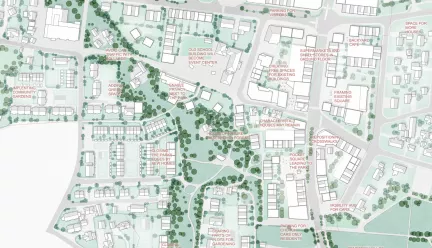
Grønn og Glad
We try to preserve as much as possible for sustainable and respectful city planning.
-
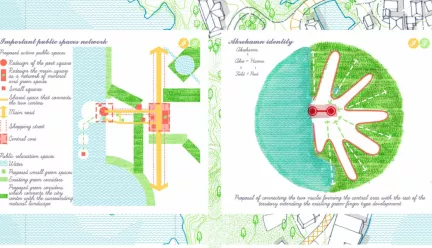
Stitching Together
Addressing Åkrehamn’s unclear urban structure and lacking a discernible centre we proposed a…
-
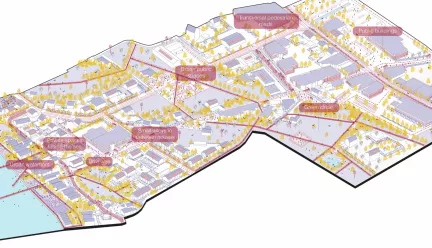
Symbiotic Landscape
The project Commonizing the daily Landscape focuses on a series of elements of the city that ask to…
